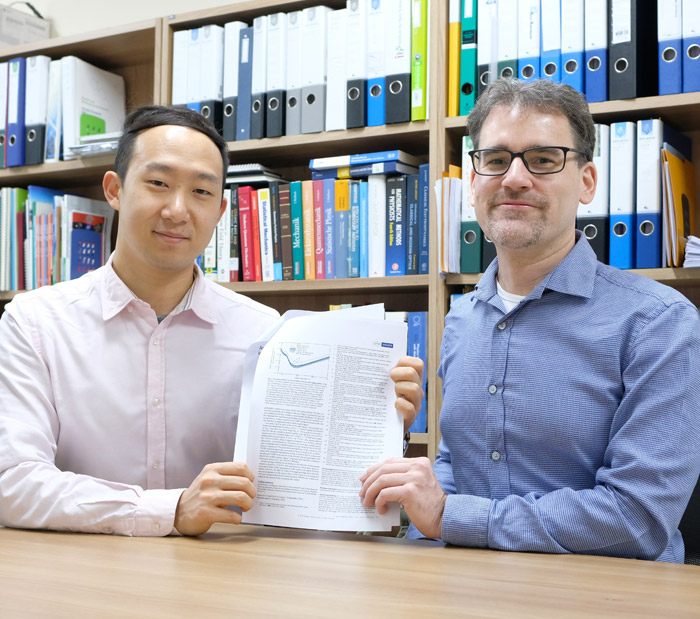Research Stories
IBS contributes to the research on Dark Matter
IBS Underground Research team has initiated the verification of controversy surrounding the Dark Matter
Physics
Prof.
ROTT, CARSTEN
Student Woosik KANG
COSINE-100 Collaborative Research Team* led by Physics Professor Carsten ROTT has opened a new path to uncovering the controversy surrounding the Dark Matter.
*COSINE-100 International Collaborative Research Team: A team consisted of international researchers operating cosine experiments to investigate the Dark Matter (More than 50 researchers from 15 different international institutions participated in this research)
The co-authors of this research are Professor Carsten ROTT and Woosik KANG (student) from the Institute for Basic Science. The team was able to suggest a possibility of verifying the signal of Dark Matter, which was claimed to have been observed through the DAMA experiment.
The result of the research was posted on the scientific journal Nature’s online version on December 6th at 3AM (Korea Time). The thesis disproved many theories that were written based on the outcome of the DAMA experiment. The data extracted from the COSINE-100 experiment hints that the DAMA experiment is insufficient to prove that the signals are relevant to the Dark Matter.
Currently two graduate students from SKKU are participating in the COSINE-100 experiment and they are researching on the simulation of detectors. The SKKU team is contributing to the research by monitoring the status of data that are produced by the detectors. The team joined this project from the stage of making detectors at a laboratory located in Yangyang county.
Professor Carsten ROTT said, “This research set a new milestone in the study of Dark Matter” “The COSINE-100 experiment provided a direct and independent verification of the previous experiments” “We were not able to observe any signal in this experiment but the COSINE-100 is receiving attention in the scientific world as it will take a pivotal role in the future study of Dark Matter”.
Professor said, “We will continue to collect data from the COSINE-100 experiment. We hope to fully understand the unusual phenomenon that were observed in the DAMA experiment” “The research did not prove the existence of Dark Matter, but we might have discovered a new phenomenon that we are not yet aware of”.
Fig. 1 Exclusion limits on the WIMP-nucleoninteraction. The observed (filled circles with black solid line) 90% exclusionlimits on the WIMP-nucleon interaction are shown with bands for the expectedlimit assuming the background-only hypothesis. The limits exclude a WIMPinterpretation of DAMA/LIBRA-phase 1 of 3 σ allowed region (dot-contours). Thelimits from NAIAD, the only other sodium iodide based experiment to set acompetitive limit, are shown in magenta.
Fig. 2. The COSINE-100 detector. The detector is contained within a nested arrangement of shielding components shown in schematic a). The main purpose of the shield is to provide full coverage against external radiation from various background sources. The shielding components include plastic scintillator panels (blue), a lead brick enclosure (grey) and a copper box (reddish brown). The eight encapsulated sodium iodide crystal assemblies (schematic c)) are located inside the copper box and are immersed in scintillating liquid, as shown in schematic b).
For more information about COSINE-100, visit https://cosine.yale.edu/home or https://cosine.ibs.re.kr


